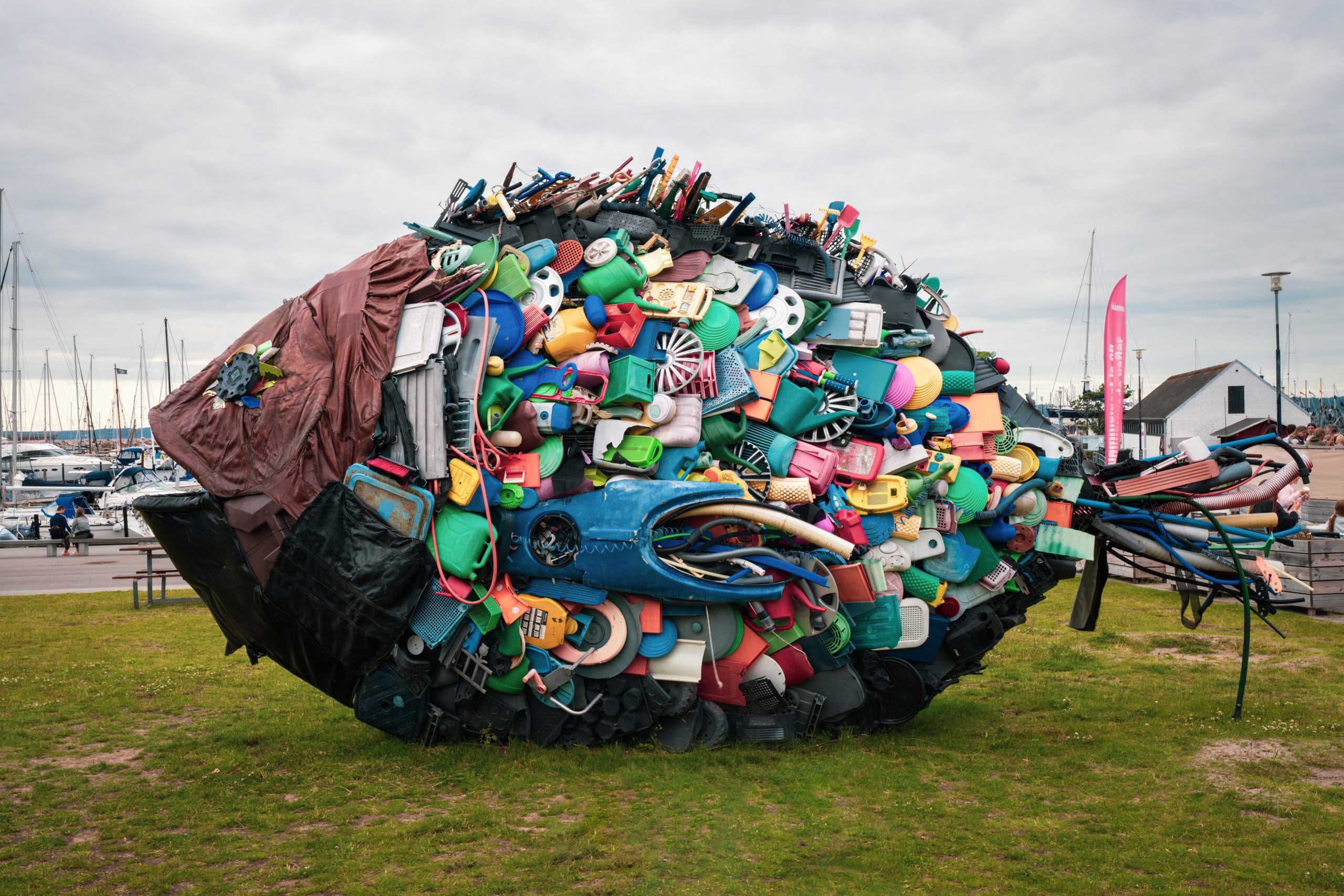Waste-to-art movement is a global phenomenon that emerged as a response to the increasing environmental concerns and the need for sustainable waste management. It involves repurposing discarded materials and waste items into artistic creations, promoting both environmental awareness and creativity.
History the waste-to-art movement globally
The concept of waste-to-art, using waste materials for artistic purposes, has existed for centuries, particularly in indigenous cultures where resourcefulness was crucial for survival. However, the modern waste-to-art movement gained momentum in the late 20th and early 21st centuries due to growing environmental consciousness.
One of the early pioneers of the movement was the Brazilian artist Vik Muniz, who gained international recognition for his art made from recycled materials and waste. His work brought attention to the potential of waste-to-art as an artistic medium and inspired many artists and environmentalists worldwide.
As the global waste crisis worsened, with overflowing landfills and pollution, artists and activists started exploring the possibilities of waste-to-art as a means to raise awareness about environmental issues. Waste-to-art installations and exhibitions began popping up in various parts of the world, encouraging people to rethink their consumption habits and the disposal of waste.
Waste to art initiatives in India
India, being a country with a massive population and rapid urbanisation, faces significant waste management challenges. However, it has also seen an upsurge in waste-to-art initiatives in recent years. These initiatives aim to tackle waste problems, promote recycling, and foster environmental consciousness among the public. Here are some notable waste-to-art initiatives in India:
Goa’s ‘Waste Bar’: In Goa, a unique “Waste Bar” was set up, where visitors could exchange their collected waste for drinks or food. This initiative aimed to encourage waste collection and recycling while also providing an entertaining way to raise awareness.
Kabad Ka Jugad, Delhi: Kabad Ka Jugad is an art and design initiative in Delhi that focuses on upcycling waste materials into innovative products and art installations. They work with local communities to raise awareness about waste management and sustainable living.
Diti Makerspace, Assam: Diti Makerspace is an organisation in Assam that encourages waste upcycling and repurposing through workshops and art projects. They collaborate with artists, designers, and local communities to create sustainable solutions for waste management.
Trash Art India, Bengaluru: Trash Art India is an organisation based in Bengaluru that promotes waste-to-art projects and events. They conduct workshops, art exhibitions, and installations made from recycled materials to inspire people to adopt more eco-friendly practices.
Hyderabad’s Recycle Art Festival: The Recycle Art Festival in Hyderabad showcases sculptures, installations, and artworks made from discarded materials. The festival aims to promote environmental consciousness and encourage waste recycling.
Emphasising sustainability through art installations
Waste-to-art initiatives in India have played a crucial role in raising environmental awareness by combining creativity and sustainability to tackle pressing waste management issues. These projects go beyond traditional art forms, utilising discarded materials and waste to send powerful messages about consumption habits, recycling, and the urgent need for more responsible waste practices. Over the last two decades many parks either entirely dedicated to waste-to-art or with waste-to-art installations have been set up through government initiatives as well, furthering the message of sustainability.
Araku Waste Sculpture Park, Andhra Pradesh: Located in the picturesque Araku Valley, this park showcases sculptures made entirely from waste materials. The initiative aims to raise awareness about waste management and recycling among visitors and local communities.
Indira Gandhi Musical Fountain Park, Bengaluru: This park in Bengaluru features a unique musical fountain created from recycled materials. The park’s centrepiece is a stunning fountain that dances to the rhythm of music while also spreading the message of waste reduction and reusing materials.
Sarai Kale Khan Waste Art Park, New Delhi: Situated in the bustling city of New Delhi, this park is dedicated to transforming waste and discarded items into art installations. The park serves as an educational platform to educate people about waste segregation and the importance of upcycling.
Waste-to-Art Park, Bhubaneswar: Bhubaneswar, the capital of Odisha, is home to a Waste-to-Art Park that showcases sculptures made from recycled materials. The park not only adds an aesthetic appeal to the city but also emphasises the need to manage waste more effectively.
Junkyard Art Park, Goa: This unique waste-to-art initiative in Goa encourages artists to create sculptures and installations using scrap and discarded materials. The park serves as an excellent example of how art can be used to drive environmental awareness and promote sustainable living.
These initiatives and parks in India are part of a broader global movement that seeks to address waste management challenges creatively. By turning trash into treasure, waste-to-art projects inspire people to think differently about waste and embrace sustainable practices for a greener and cleaner future. You can explore environment NGOs here on Give.do and make a difference for our planet!

Choosing to tread the proverbial road less travelled, Ramon embarked upon a career in journalism and spent over 8 years working for various media organisations. A deeper calling to create a sustainable impact in the lives of the less fortunate compelled him to join the social sector. Ramon is a minimalist at heart and an explorer in spirit.


Leave a Reply